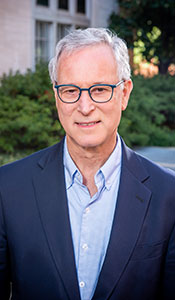When the NF1 gene was discovered in 1990, it was quickly learned that the gene product functions as a regulator of a protein called Ras. Ras is a key component of a cell signaling pathway that controls cell growth and development. This pathway involves multiple proteins that are involved in transmission of signals received at the cell surface to regulation of genes in the cell nucleus. In more recent years it has been learned that variants in genes that encode these other proteins also lead to medical disorders, which now are collectively called “Rasopathies.” These have distinctive, but in some cases overlapping, clinical features. I will briefly review some of these features here.
Syndromes Associated with Disruptions in the RAS/MAPK Pathway
Legius syndrome – This condition, which produces café-au-lait spots, skin fold freckles, and learning disabilities, is due to a mutation of the SPRED1 gene. Leguis syndrome can be impossible to distinguish from NF1 in young children who have only café-au-lait spots and skin fold freckles; other features of NF1, especially neurofibromas, are not seen in Legius syndrome, but even in NF1 these may take years to develop. Diagnosis of Legius syndrome is done by genetic testing of the SPRED1 gene, which is usually tested alongside the NF1 gene in evaluation of a child with multiple café-au-lait spots. NF1 is much more common than Legius syndrome, so most children with multiple café-au-lait spots will turn out to have NF1, but for those few who do have Legius syndrome, there is less need to carry out surveillance for tumors.
Noonan syndrome – Noonan syndrome is characterized by short stature, cardiac defects, characteristic facial appearance, and learning and developmental problems. It has long been noted that some people with NF1 have facial features similar to those with Noonan Syndrome, and now it is clear that the reason for this is that the conditions share a disruption of Ras signaling. Also, some people with Noonan syndrome have café-au-lait spots, and even neurofibromas, that may overlap with NF1. Noonan syndrome is caused by a mutation in any one of many genes that encode various proteins involved in Ras signaling, including some forms of Ras itself. This alteration of the normal RAS/MAPK signaling disrupts the regulation of cell growth and division, resulting in the characteristic features of Noonan syndrome.
Cardiofaciocutaneous (CFC) syndrome – This condition does not share many characteristics with NF1. It can be caused by mutations in any one of several genes involved in the Ras pathway, and affects many parts of the body, including the heart, skin, and facial features. People with CFC also have developmental and intellectual disability, ranging from moderate to severe.
Costello syndrome – This disorder affects many parts of the body, including the heart and skin, and is also characterized by developmental and intellectual disabilities and distinctive facial appearance. Costello syndrome is associated with mutations in the gene that encodes one of the many Ras proteins, called HRAS.
Mechanism-based Therapies as Potential Treatments for RASopathy Disorders
An important question that has emerged in recent years is whether mechanism-based therapies developed for NF1, such as MEK-inhibitor treatments, may be effective in treating other RASopathy disorders. Mechanism-based therapies that inhibit the over-activated RAS pathway and other RAS-connected pathways may open new avenues of therapeutic intervention for the many complications of the RAS-related disorders. When considering the potential effectiveness of inhibitor-based therapies, there are a few factors that present challenges in using these therapies to treat RASopathies other than NF1. It is unclear whether the cognitive or developmental manifestations can be improved with treatment, for example. Another consideration is that it’s relatively straightforward to evaluate treatment success in people with NF because tumor growth is measurable. Identifying such measurable outcomes for other Rasopathies may be more difficult. A notable exception is the occurrence of cardiomyopathy in several of the Rasopathies. Cardiomyopathy is a failure of the function of heart muscle and can be debilitating and even life-threatening in some with Rasopathies. This important manifestation is a subject for study of medications that inhibit Ras signaling.
Lastly, our NF Clinic is continuing to see patients for routine visits using telemedicine as part of an effort to slow the spread of COVID-19 and protect our patients. Telemedicine has been helpful in addressing specific patient concerns, arranging diagnostic testing, and discussing the results of imaging and other tests. Though we’re looking forward to seeing patients for in-person clinic visits again in the near future, we also believe many of our patients will continue to benefit from the enhanced access and convenience that telemedicine can provide, and we’ll be glad to provide this option going forward.
